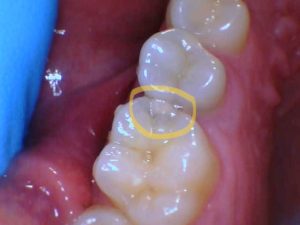According to the National Institutes of Health, the most prevalent health condition after the common cold is tooth decay.
It’s more than likely that if you haven’t already had a cavity, you will develop at least one in your lifetime. So, how do you know if you have a cavity?
Well, depending on the severity of your tooth decay, you may experience a variety of symptoms. Here are some of the accompanying symptoms that go along with tooth decay.
- Nothing (in the early stages)
- A toothache or spontaneous tooth pain
- Tooth sensitivity
- Pain (slight or severe) when eating something sweet, hot, or cold
- Staining (brown, black, or white) on the surface of your tooth
- Visible holes in your tooth. Those holes are cavities
- Pain when biting down
The best time to catch a cavity is in the early stages, when there are few, if any, symptoms.
Keeping your twice yearly (or more) visits with us will ensure we catch them in time. If you haven’t seen your dentist in a while, now is the time to make that appointment. Call us now at 720-826-4402 or you can schedule an appointment online on our website www.2thbarbydrb.com.
We will let you know the best course of treatment for your particular situation. The recommendation could be as easy as watching and waiting to see if we find any tooth decay in the very early stages. Or, if you are symptomatic, we may have to formulate a more in-depth treatment plan. Some patients will benefit from regular use of a high fluoride prescription toothpaste to help strengthen the enamel and remineralize areas of early decalcification. If actual holes/cavities are present, then we can remove the area of decay and place fillings to make your teeth healthy and whole again.
As always, brush twice a day with a fluoride toothpaste, floss at least once a day, and try to minimize the amount of sugar in your diet. These steps will help you be proactive in preventing cavities. Even better, your teeth will thank you for it!

